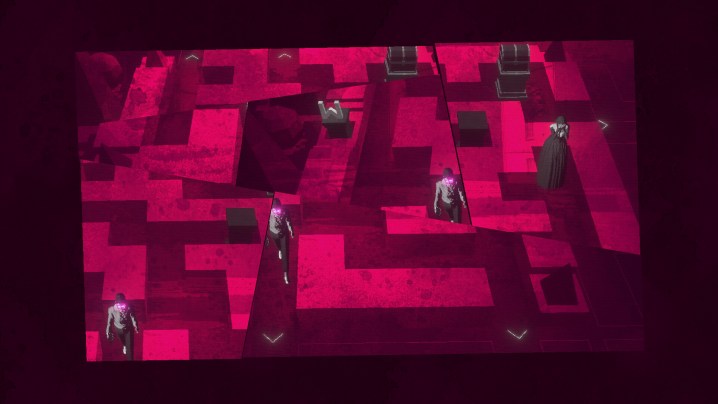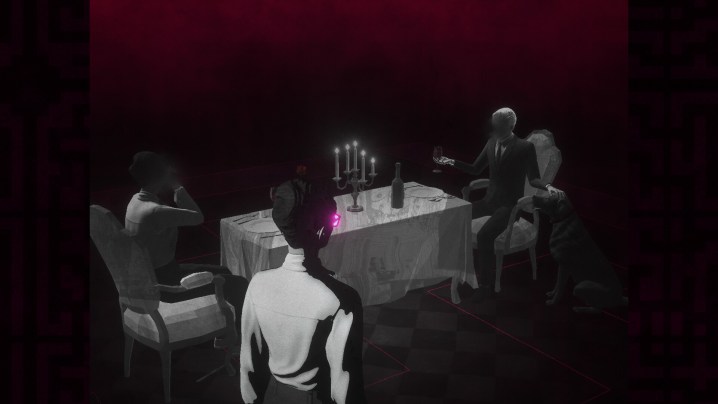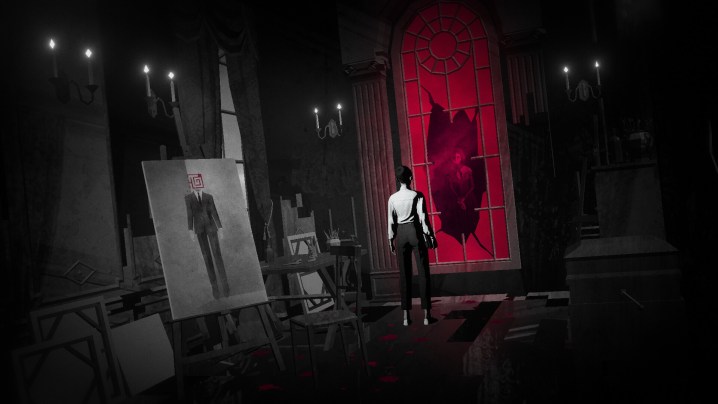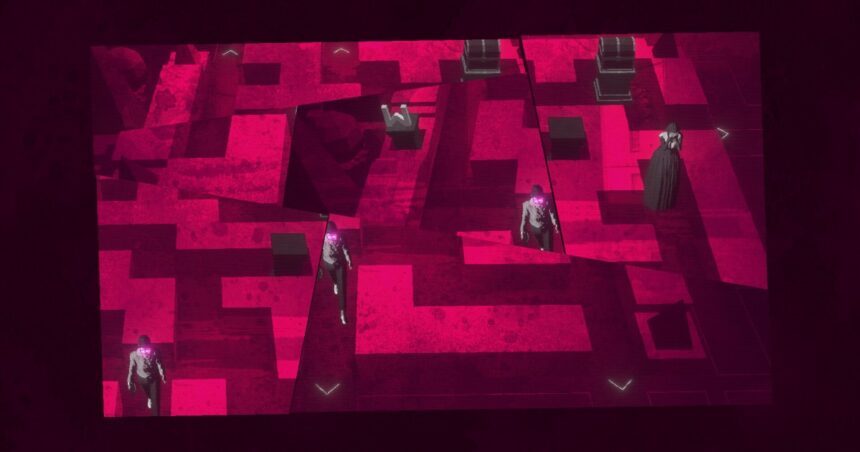
It was a random day in March when I got a surprising email. The PR team for Annapurna Interactive had reached out to send over a preview build of Lorelei and the Laser Eyes. I wasn’t told when the game was coming out or even when I could write impressions on it. I’d end up even more puzzled when I downloaded it to my Steam account and realized that I’d been sent the full game despite the fact that no release date had been announced yet. I quite literally had no idea what I was in for at that moment. Weeks later, I was wrapping credits on one of the most remarkable games I’d ever played.
Lorelei and the Laser Eyes is 2024’s biggest surprise. Developed by Simogo, the puzzle-based adventure game is a remarkable design feat filled with incredibly clever mental challenges. It’s the kind of project that leaves one wondering how a group of developers could even come up with such a bold creative vision, let alone execute it as well as this. Weeks after finishing its final puzzle, I was desperate to learn everything I could about one of my new, all-time favorite games.
I’d get some of the answers I was so desperately looking for in an email interview with Simogo co-founder Simon Flesser. While he was careful to keep the mystifying game’s symbolism under wraps, Flesser gave me some insight into how the impressive project came together. What originally began as a small follow-up to Sayonara Wild Hearts soon became Simogo’s biggest and boldest game yet thanks to the power of iteration and creativity.
Building the maze
Before Lorelei and the Laser Eyes, Simogo’s last project was the critically acclaimed Sayonara Wild Hearts. In that short rhythm game, players blow through a stylish, emotional story to the beat of some high-energy music. Rather than capitalizing on that success with a sequel or something similar, the team at Simogo wanted to do something entirely different. Flesser calls the studio’s thinking a “counterreaction in creativity,” noting that it wanted to make something slower and more driven by the brain than the heart. It didn’t have much of an idea for what that meant originally, but it did have a title.
“We only knew that we wanted to make a game that was black and-white because I had struggled so much with colors during Sayonara Wild Hearts, and we knew what the game would be called,” Flesser tells Digital Trends. “We had the title before the game. We had written down a page of imaginary band names we could use for the Sayonara Wild Hearts soundtrack release, and one of them was Lorelei and the Laser Humans, which somehow along the way was turned into the alliteration, almost rhymey title.”

That title would eventually bloom into an ambitious puzzle game that was more in the vein of Simogo titles like Device 6 than Sayonara Wild Hearts. The final version plays like a riff on Resident Evil or Alone in the Dark, minus any combat. It’s a brainy exploration game where players solve a series of interlocking puzzles spread throughout a moody mansion. That wasn’t the original vision for the game, though. In fact, the original vision was surprisingly small compared to the final one.
“The entire project was very iterative, and what we released was maybe the third iteration of the game,” Flesser says. “It always had puzzle components, but it was more conceptual, relying on specific mechanics, most related to switching of camera perspectives. These influenced some of the puzzles that ended up in the game. We had planned for it to be smaller than Sayonara Wild Hearts, but as we made so many tools and had so many different ideas along the way, the project grew naturally. You never really know in the end what the project wants to be itself, and I think that is the only way you can create something that feels true. If you know what the entire thing is before creating it, then there really is no point in making it.”
What’s especially notable about the final result is how rich it is with references to other media. It looks like a 1990s horror video game and even calls back to that era with one set of retro puzzles. That combines with references to games like Pac-Man and avant-garde films like Last Year at Marienbad. Those rich references became an important piece of the puzzle for Simogo as it aimed to build a world that felt much bigger than what players see in its central hotel setting.
“We wanted this game to feel like it was aware of it being a piece of media, and like you were exploring it like a big archive of things,” Flesser says. “We wanted to create a sense of the things you find in the game existing as real pieces of media as well, to make the game’s universe feel rich, suggesting an entire world outside the hotel. It was also a reflective project as a whole. There is a lot of Simogo history in there as well.”

Perplexing puzzles
What’s most impressive about all of this is the brilliant puzzle design at the heart of the experience. Lorelei and the Laser Eyes contains a vast array of creative puzzles that aren’t just iterating on one idea. Some are simple keypad solutions built around riddles. Others are far more complex, weaving together clues from notes, environmental observation, and hidden ciphers. A lot of brainpower is required to crack it all, but the solutions are always rewarding to find thanks to smart internal logic.
For instance, one key puzzle chain revolves around an art exhibition housed within the hotel. Midway through the adventure, players unlock rooms filled with odd installations. Each of them is framed as a piece of art playing with the concept of perspective. It turns out each of them houses a secret puzzle with its own jaw-dropping solution. In one room, housed behind a door with the year 1938 emblazoned across it, players need to use a stationary camera to measure number statues and compare them to other objects in the room. It’s a brain-bending solution, and I can hardly understand how one would even create something like it. Flesser explains how that room came to be when discussing Simogo’s puzzle philosophy.
“No puzzle is created in a vacuum. They all have ideas informing each other,” Flesser says. “For the hotel room puzzles, the theme was always about how we could play with 3D camera perspectives, without using any ‘fake’ magic digital components. They’re created very mechanically and practically as if they could exist physically. We’d sit down and think about the different things a 3D camera could do, and the differences between rotation, pans, zooms, tilts and concepts like that. With the hotel rooms, there was also such an established framework to work within, since they all have the same type of deciphering phase, of translating a 3D space to inputs on buttons. For 1938 specifically, it’s based around zoom and size and perspective distortion. Practically, it was just very manual work of constantly moving around objects and re-exporting paintings until the perspective fits.”
Puzzles like that can make Lorelei and the Laser Eyes a difficult game, especially for those who aren’t as well-versed in the genre. It’s a high-level puzzle game that requires a lot of mental energy. Simogo doesn’t hold players’ hands either; there’s no hint system here. While that may make the adventure feel a little daunting, Flesser notes that the game isn’t exactly meant to be played entirely alone.
“We want to invite people to communicate with each other,” Flesser says. “We had similar ideas in other games. Like SPL-T not having an online leaderboard, so they’d instead compare scores and talk about strategies and techniques.”
Those who are brave enough to step into the maze won’t be disappointed. Lorelei and the Laser Eyes is a remarkaby creative vision that expertly stitches ingenious puzzles and media references together. It’s a crowning achievement for Simogo, but it’s a broader feat too. It’s a shining example of why sometimes the best creative decision is to zig when everyone expects you to zag. Lorelei and the Laser Eyes is nothing like Sayonara Wild Hearts, and that’s exactly why it’s so special.
Lorelei and the Laser Eyes is out now on Nintendo Switch and PC.
Editors’ Recommendations

